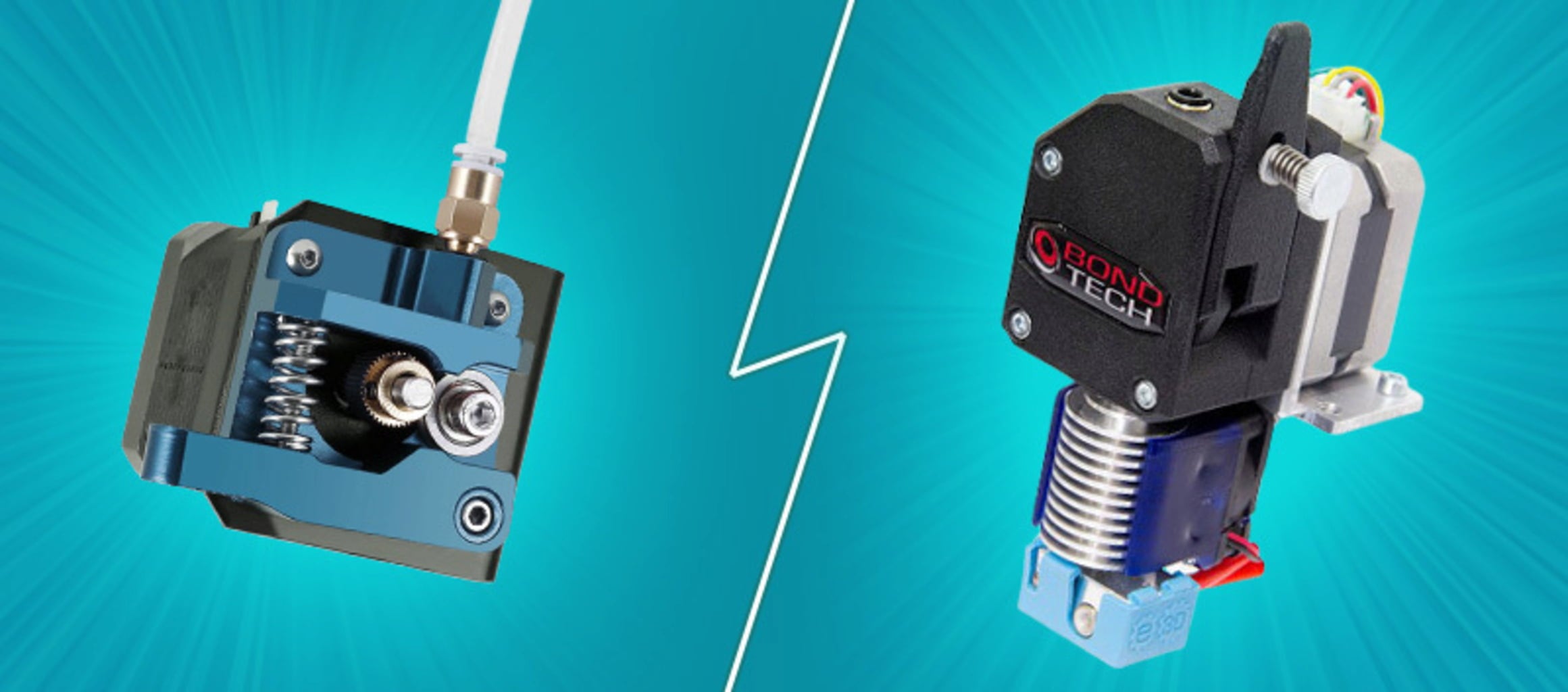Direct-drive extruder vs. Bowden extruder
These are the differences
If you deal with 3D printers, you will sooner or later be confronted with the terms “direct drive extruder” and “bowden extruder”. Both extruder variants ensure that filament is fed into the printhead, but differ in the way the filament is pushed into the hotend. Both a direct extruder and a Bowden extruder have their advantages and disadvantages, which we would like to discuss in more detail below and thus make it easier for you to choose when buying.
Direct extruder
The direct drive extruder (A) is installed with the hotend (C) and pushes the filament (B) directly into the nozzle (D). All filament processing components are therefore located in one place on the print head. This creates advantages and disadvantages that you should consider before buying a printer.

Advantages
- Better extrusion
Since the extruder is located directly on the print head, the motor can simply push the filament through the nozzle.
- Faster retraction
Due to the proximity of the extruder and nozzle, the filament can be retracted quickly; in many cases, no retraction setting is necessary.
- Weaker, smaller motors are possible
Because of the short distance between extruder and nozzle, less torque is required from the motor to push the filament.
- Wider range of compatible filaments
Direct extruders are compatible with a wide range of filaments - they print reliably even with abrasive and flexible materials.
Disadvantages
- More weight on the printhead
Since the extruder is mounted on the hotend, it has more weight. The increased weight has the following disadvantages:
- More power requirement
- Increased wear on toothed belts and bearings
- Printing speed is reduced
- More complex maintenance
After the feed and the hotend are built directly together, maintenance such as cleaning the nozzle proves to be more difficult.
Bowden extruder
Unlike the direct drive extruder, the Bowden extruder (A) is attached to the frame of the 3D printer and pushes the filament (B) through a long PTFE tube (Bowden tube) into the hotend (C).
Advantages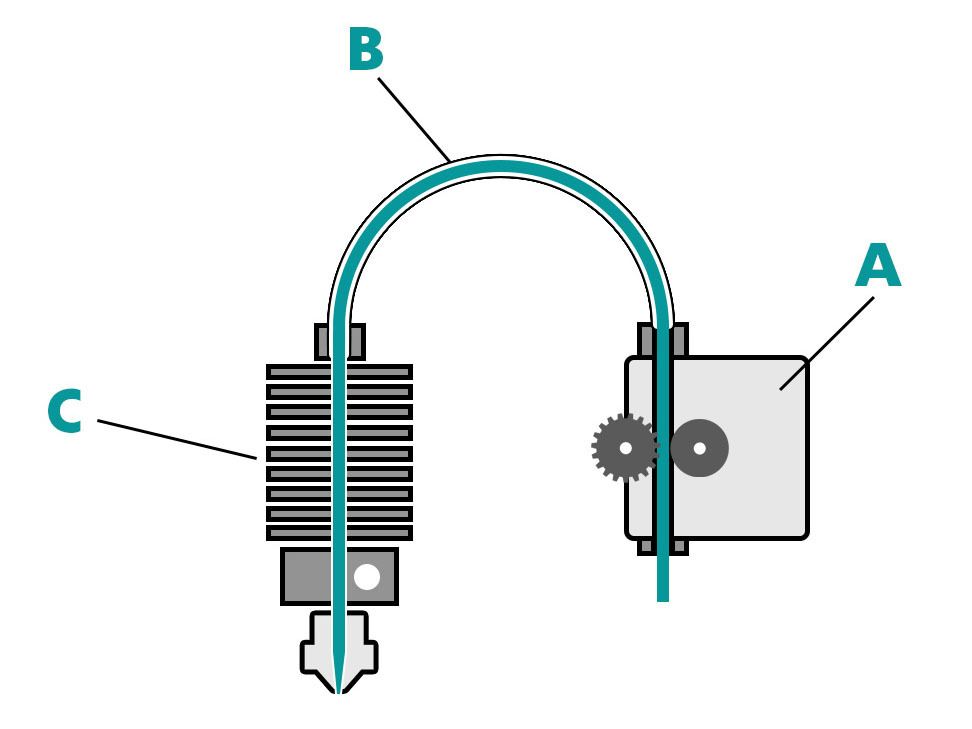
- Less weight on the printhead / less moving mass
Since the printhead can work without additional weight, the following advantages result:
- Clean movements
- Increased printing speed
- Nice prints due to reduced vibration on the printhead
Disadvantages
- More powerful motor needed
A Bowden extruder requires a more powerful motor with more torque to control the filament because it has to be pulled through the PTFE tube.
- Slower response time
Increased friction in the Bowden hose leads to a reduced reaction time. Bowden extruders require longer and faster retraction to avoid tension.
- Smaller range of compatible filaments
Flexible or abrasive filaments can wear out more in the Bowden hose and are processed more poorly than with the direct drive extruder due to the longer conveying path.
Conclusion - which extruder should you choose?
Both extruder variants have their advantages and disadvantages. The biggest difference is clearly to be found in the processing of flexible filaments. If you want to print quickly and do not use flexible filament, you can use a Bowden extruder.
However, if you want to process flexible materials, a direct extruder is definitely recommended.
Latest reviews
-
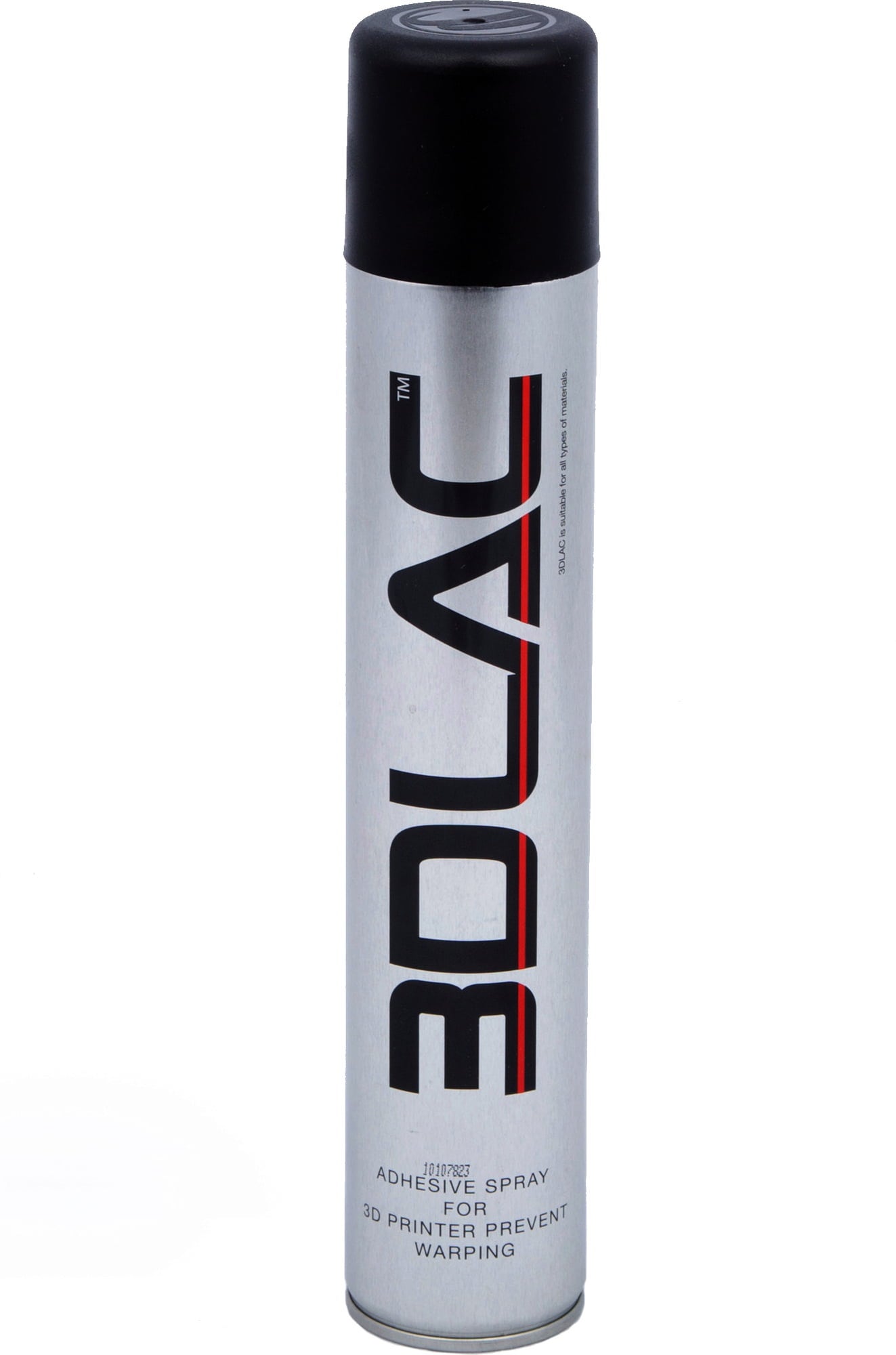 4.9 (409)
4.9 (409)3DLac Spray Adhesive, 400 ml
- Suitable for all materials
- Without perfume
- Resistant to elevated temperatures
€ 9,29 (€ 23,23 / l)Delivery by April 28
-
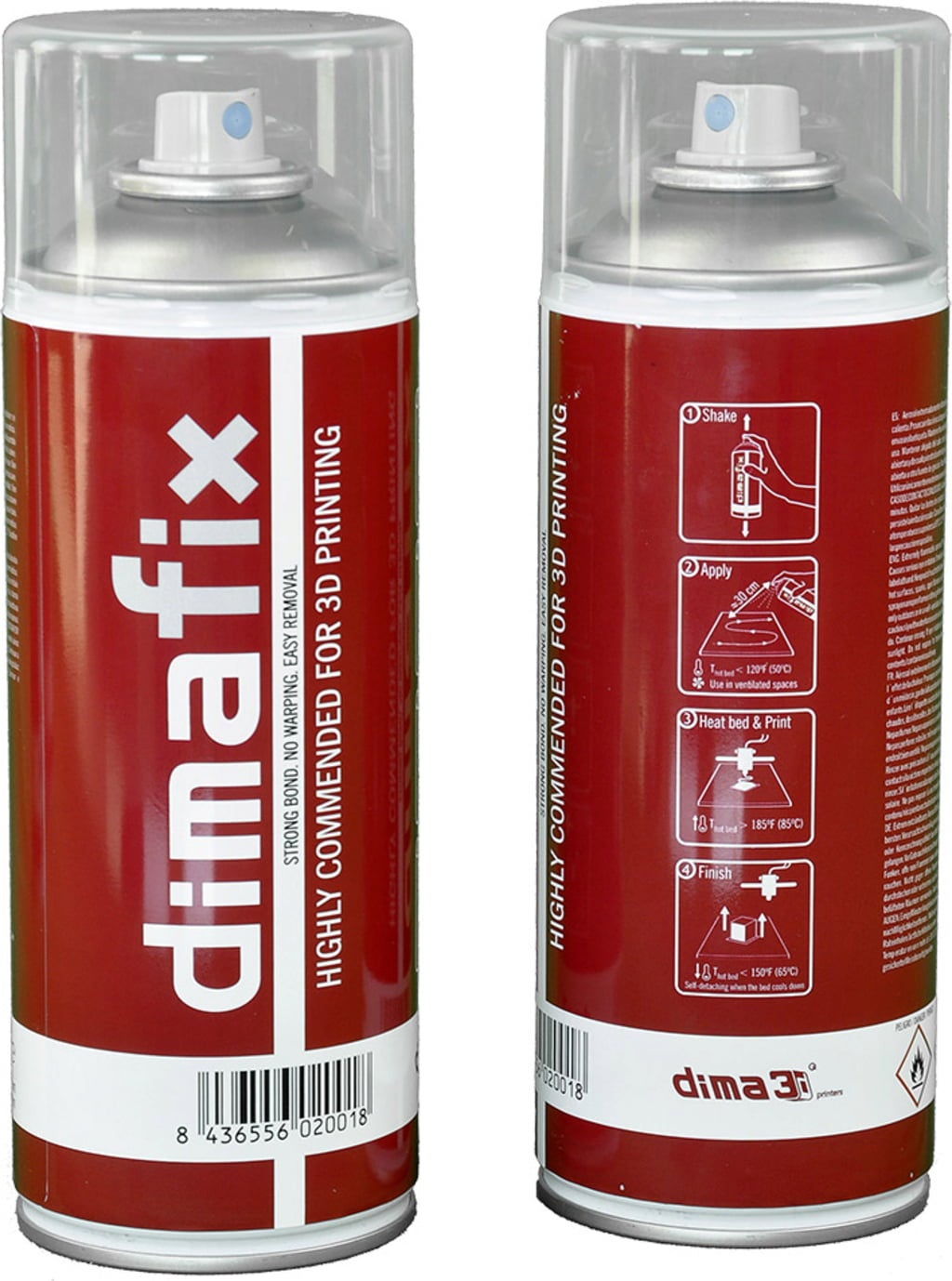 4.8 (141)
4.8 (141)DimaFix Adhesive spray, 400 ml
- For heated building boards
- Strong adhesion
- For many different materials
€ 16,39 (€ 40,98 / l)Delivery by May 14
-
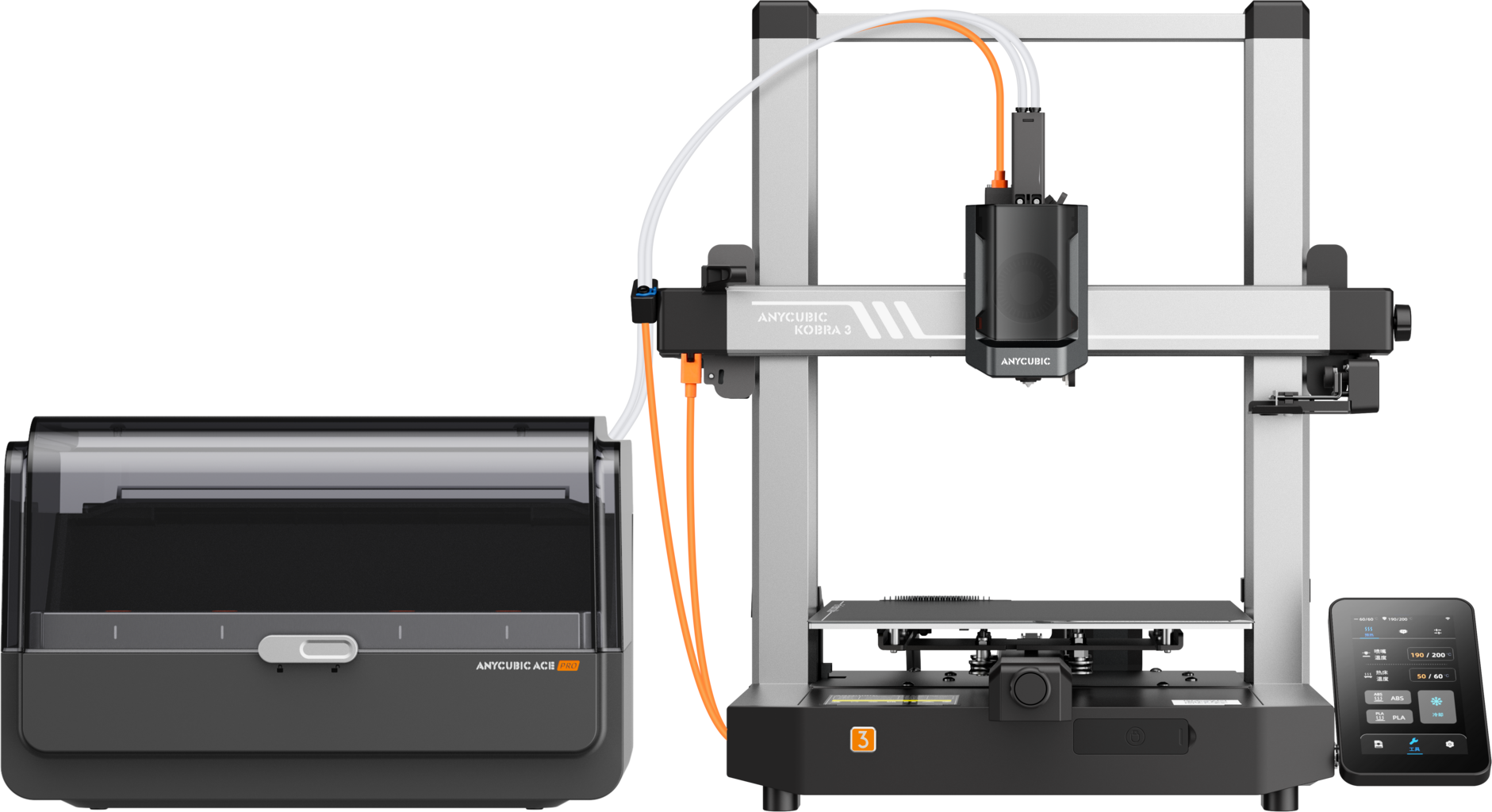 € 379,00 € 511,47
€ 379,00 € 511,47Delivery by April 28
-
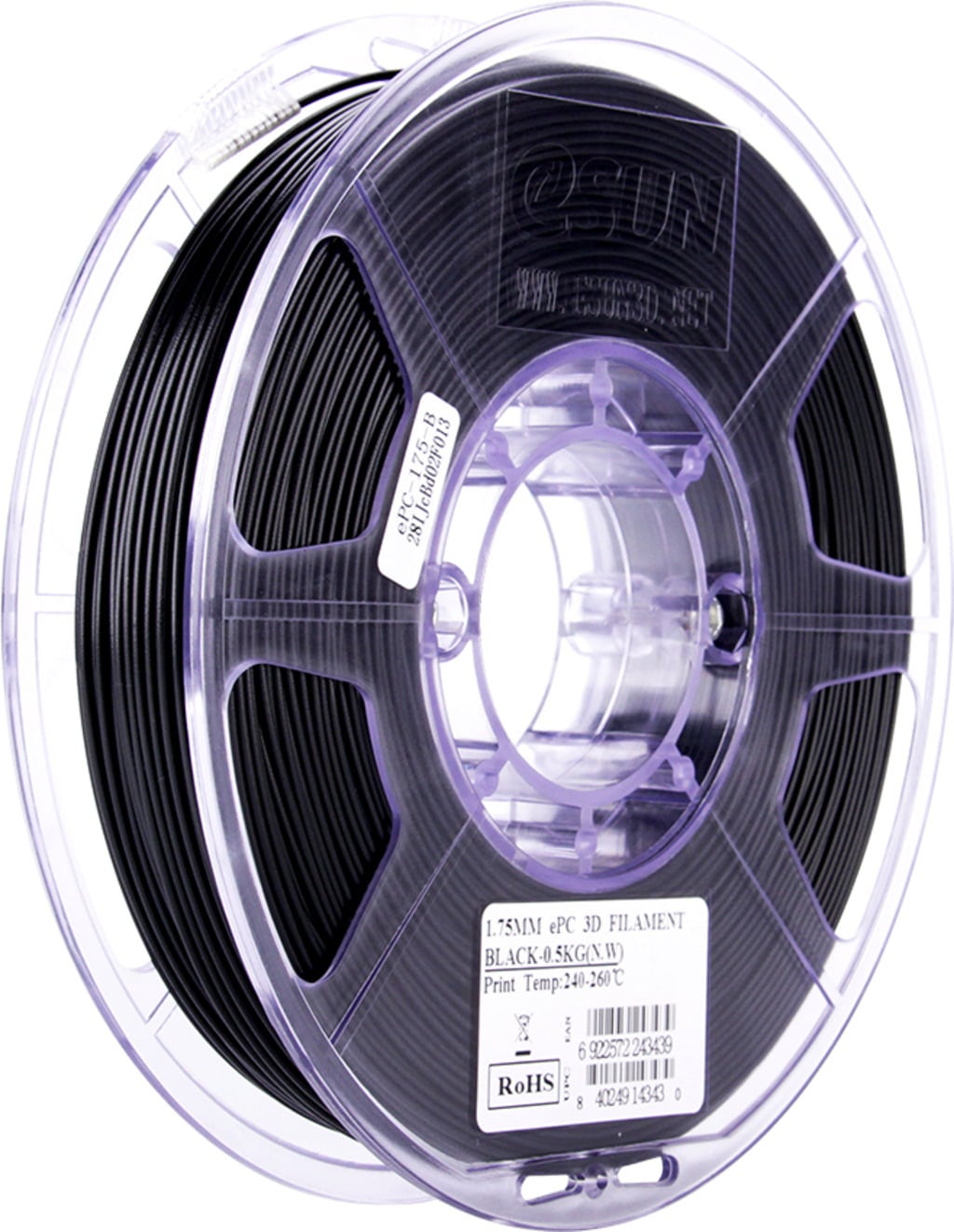 3.7 (3)
3.7 (3)eSUN ePC Black, 1.75 mm / 500 g
-10%- High impact strength & toughness
- Heat resistant up to 80 °C
€ 29,69 € 32,99 (€ 59,38 / kg)Delivery by April 28
Magazine Articles:
-
Ireland: Free standard delivery from € 87,90
-
Free
returns More than 10.550 products
We deliver worldwide to
more than 40 countries
